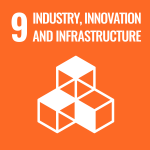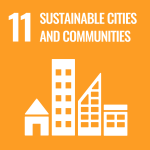Cracked concrete can cure itself
A traditional home is often made up of concrete floors and partition walls. The concrete is used to ensure good insulation against the cold and noise. Yet concrete tends to crack under pressure. Tiny cracks can be the start of larger issues, such as corrosion of the steel reinforcing the concrete.
By putting the brainpower of academics at the Technical University of Delft and experts from the chemical industry to use, a solution was born.
The Technical University of Delft has developed a bacteria type which produces limestone. When adding these bacteria to cement, they can fill cracks in the end product (concrete) by producing limestone. To ensure the bacteria are not activated until the concrete starts to crack, the chemical industry added co-polymers to the mix. Once these co-polymers start to break down, they serve as food for the bacteria, which in turn makes them produce the limestone.
Applying this technology increases the lifespan of concrete constructions by 40%. Since the constructions require less maintenance, this means less time is spent on the road to go fix them. Also, less concrete needs to be produced. Both these developments lead to less CO2 emissions in the long run.
The technology is suited for concrete constructions that are exposed to air or water, such as tunnels and the basements in our homes. This means there is a potential for 1 billion m3 of concrete worldwide per year to be made more sustainable. But we are not there yet. In 2017 the first commercial project using the self-healing agent was realised and multiple other projects followed. Currently, Corbion and Green-Basilisk are working hard to improve the technology further, to enable its use on a large scale.
Associated SDG Targets


